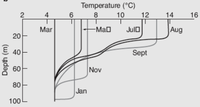
Photo from wikipedia
Abstract Polyetherimide nanofiltration membranes were fabricated by the double-blade casting technique. Throughout this technique, the application of different compositions for the top-layer and sub-layer polymeric solution becomes possible and therefore… Click to show full abstract
Abstract Polyetherimide nanofiltration membranes were fabricated by the double-blade casting technique. Throughout this technique, the application of different compositions for the top-layer and sub-layer polymeric solution becomes possible and therefore it could be used as an effective tool for controlling the morphology of the membranes. The preliminary experiments showed that the highest polymer concentration for the sub-layer for obtaining a suitable morphology and low hydraulic resistance and a defect-free selective top-layer is 16 and 19 wt%, respectively. The effect of membrane fabrication parameters i.e. solvent/co-solvent weight ratio in the top-layer (ψ), top-layer casting thickness (δ), and evaporation time (θ) on the performance of the membranes was evaluated and optimized using the RSM method. Twenty experiments were proposed by the RSM design of experiments method. The experiments were done and 20 membranes were fabricated at the proposed conditions. The membranes were evaluated for pure water flux, NaCl and MgSO4 rejection, and flux and porosity. The analysis of variance (ANOVA) indicated that evaporation time had the most significant impact on the flux and rejection, whilst porosity was most affected by top-layer thickness. Finally, two options for the optimization of the fabrication condition were considered. In CASE 1, membrane fabrication parameters were optimized for attaining maximum NaCl rejection and in CASE 2, both flux and NaCl rejection were considered as the targets for optimization. For CASE 1, the best salt rejection was obtained as 25.7 % at a permeate flux of 0.38 L/m2h.bar and in CASE 2, the optimum values for salt rejection and flux were obtained at 13.6 % and 1.47 L/m2h.bar, respectively. Reasonable agreements were observed between the predicted and actual experimental values.
Journal Title: Journal of water process engineering
Year Published: 2020
Link to full text (if available)
Share on Social Media: Sign Up to like & get
recommendations!